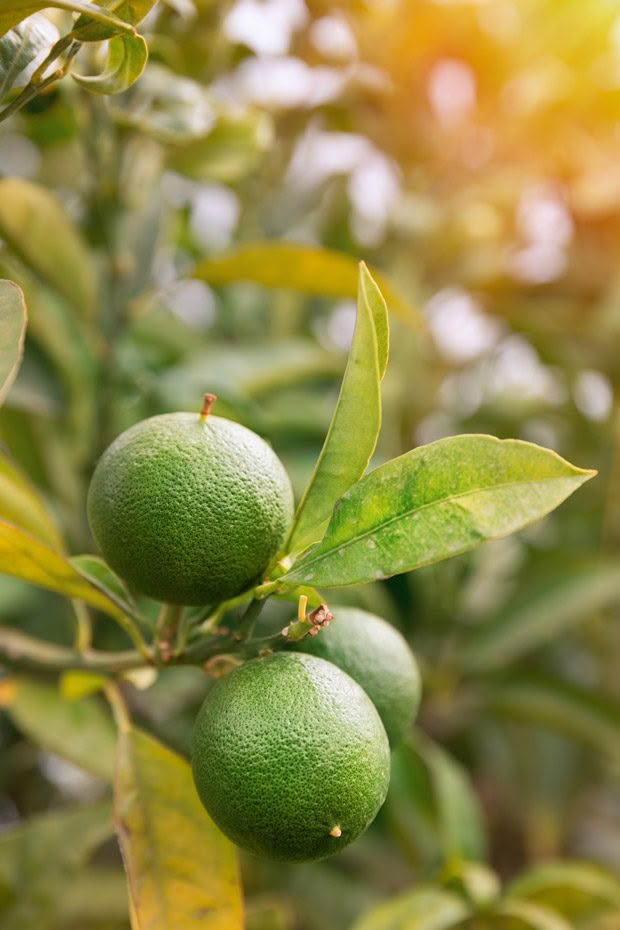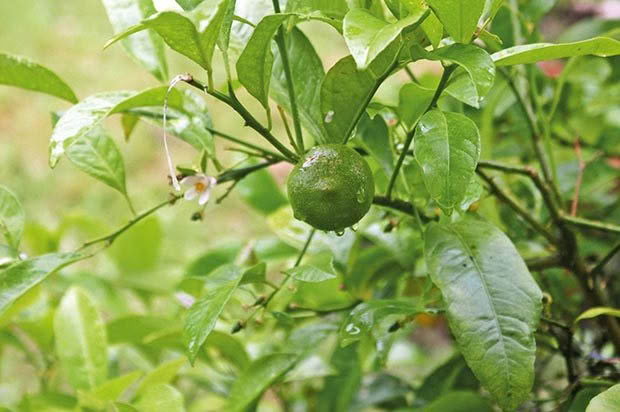How to grow Mexican limes in New Zealand

How to keep a lime happy, even in the cold.
Words: Ben Gaia
The Meyer lemon is traditionally touted as the hardiest and easiest citrus variety to grow in New Zealand’s varying climates, which border somewhere between alpine and tropical, often both before breakfast.
Most citrus prefer no frost and warm conditions without snow or strong winds, such as coastal gardens which are well sheltered. But after 20 years of specialising in growing hardy citrus trees organically, I can thoroughly recommend the Mexican Lime. Mexican Lime seems at least as hardy – I have seen it sit out in hail and many frosts at -6°C – so if you have a surviving Meyer lemon, chances are a Mexican lime will also succeed in your climate.
My small tree has sat outside now for 10 winters, hardly touched by frost up against the warm side of the house, open to the heavy rains from the north west. It flowers and bears fruit so prolifically here that you can pretty much pluck a lime for your gin and tonic all year round.

Limes are green at first but if not picked they turn orange.
The limes are green at first but if not picked they turn orange and look like small mandarins. This is a great conversation piece, especially if your place is too cold for mandarins.
Citrus really don’t like frost and only very specific varieties will handle it. I’ve found the magic secret for beating frost is to water and feed through the coldest part of winter with seaweed-based preparations. The boost of trace elements and salty, seaside energy the seaweed provides are like a second skin for your citrus trees on frosty nights. Last winter, I lost only two out of 16 citrus varieties, left outside in a series of -6°C frosts. They were sheltered from the south and east (our coldest winds) in large containers.
Frost damage is really a lack of water available to the plant cells. Through the frostiest time of winter, make sure trees are frequently watered, and fed with diluted seaweed preparations in a watering can. Boom!

Ben’s Mexican lime flowering in spring.
A good fallback protection is an old folded sack thrown over the top of the bush on a mean starry winter night or, if you have the option, site plants in a ventilated, irrigated hothouse with at least one wall that can be opened for pollination by bees in summer.
I got my Mexican Lime from Flying Dragon Citrus Nursery in Kerikeri in the Far North. The name refers to the dwarfing citrus rootstock which is a good option for growing tub plants as they can be trimmed into large bonsai-like bushes and won’t outgrow the tub.
BEN’S TIPS FOR KEEPING CITRUS HAPPY
1. Mexican limes are prone to black mould, like many marginal subtropicals in the stress of harsh winds and seemingly endless rain, but a quick spray with Conqueror oil and a good rub of the leaves soon rids the plant of this affliction. I’m lucky enough to have native slugs which can be left on the foliage to clean the trees of the mould.
2. Because of scale’s rapid growth, you will need to do a bit of thumb-based squashing at the branch nodes.
3. Limes flower so much that it pays to snip back some of the over-enthusiastic branching sprays.
Love this story? Subscribe now!
 This article first appeared in NZ Lifestyle Block Magazine.
This article first appeared in NZ Lifestyle Block Magazine.
